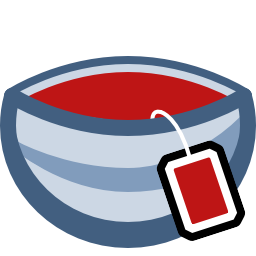Native Client Suggestion: Dutch client version
- Thread starter shinzoke
- Start date
Hey,
thanks for the offer.
I'll reach out back to you in a few days with a little tutorial how to do it (Maybe write an official tutorial )
)
thanks for the offer.
I'll reach out back to you in a few days with a little tutorial how to do it (Maybe write an official tutorial
shinzoke
Member
Bumping this post 
but euhm @WolverinDEV
If you just point me towards the files I can snoop around and start the translation, I assume that it's not that hard to get a translation working
(I know you got a lot on your mind right now so I don’t want to harass you with these things)
greetz
Shinzoke
but euhm @WolverinDEV
If you just point me towards the files I can snoop around and start the translation, I assume that it's not that hard to get a translation working
(I know you got a lot on your mind right now so I don’t want to harass you with these things)
greetz
Shinzoke
Arg... and I forgot it....
I'm going to eat rn, but I'll (hopefully may just respond so I've a notification) get back here
I'm going to eat rn, but I'll (hopefully may just respond so I've a notification) get back here
Vafin
TeaFanatic
Perhaps this post will help youI’ve noticed that there ain’t an option for Dutch language at the settings section...
if im allowed I can start translating to Dutch...
Greetz
Shinzoke
Many words and phrases cannot be translated
I want to say that the problem that I opened earlier is not solved. https://forum.teaspeak.de/index.php?threads/some-words-and-phrases-are-not-translated-teaspeak-client-build-1-4-8.2774/ In General, I do not like the current translation system, because there is no file where the source text...
 forum.teaspeak.de
forum.teaspeak.de
Well that's not 100% correct : https://forum.teaspeak.de/index.php?threads/setup-the-webclient-rightly-teaserver.1634/#post-18145
PS: After my two meeting I'll have rn I'll publish a auto translated dutch version which could be handy as a starting point for you
PS: After my two meeting I'll have rn I'll publish a auto translated dutch version which could be handy as a starting point for you
Okey, I'll not yet write a full tutorial since I've (may) planned to change the translation system a bit,
so you're able to see your changes directly within the web client without a need of a translation repository (which is a bit more tricky to setup).
Anyways here are already the basic steps:
I hope this will help you out and give you a clue how to do the translations
so you're able to see your changes directly within the web client without a need of a translation repository (which is a bit more tricky to setup).
Anyways here are already the basic steps:
- Download the language you want to translate
You can download the translation file from here: https://github.com/TeaSpeak/TeaWeb/tree/develop/shared/i18n
If your language hasn't been translated/generated contact me and I'll generate a base file for you
- Open the file in the I18N editor
Navigate to https://tools.teaspeak.de/i18n-editor/ and load the translation file
- Begin to translate
Here are some handy tips:- Save on a regular bases.
The website does not have any kind of auto save. In case of a page crash or reload all your changes are lost.
So it's highly recommend to change on a regular bases to avoid any frustration.
- Mark human translated or verified translations
Each translation has flags which can bet set/edited. The flag "human-verified" indicates, that this translation is correctly translated and has no need to be translated any more. (PS Use the approve translation in the top right)
- Use the advanced filter (Advanced settings)
Filtering your translations can improve your workflow. Not all translations are ensured to be visible for the user (Some of them are just prints into the console). You can filter for only UI visible translations by setting the whitelist filter toui-visible.
Here is a list of all available flags:
ui-visibleThis flag indicates that the translation will be definitively visible to the user in-use-systemThe translation has still be found within the code (Attention: Even though a translation might not has this flag it's still being used!) in-use-manualThis translation has been manually flagged as in use (see in-use-system)human-verifiedThis translation has been verified by a human native speaker google-translateThis translation has originally been translated by google (The human-verifiedoverrides this flag)
- Save on a regular bases.
- Propose your changes
Once done, feel free to open a PR on github to propose your changes.
You can also send me the translation file in private and I'll update it.
- Get the credit you deserve!
Add yourself to the contributors (in the first lines of the file, you're required to open the translation file with a text editor).
I hope this will help you out and give you a clue how to do the translations
Share:
